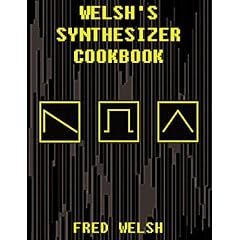Hello everyone
Does something like a table or so exist, which contains a selection of instruments and their waveforms? If anyone owns something similar I would be very glad if he/she would post it ![]()
Hello everyone
Does something like a table or so exist, which contains a selection of instruments and their waveforms? If anyone owns something similar I would be very glad if he/she would post it ![]()
You mean acoustic instruments waveforms?
These waveforms are very different from the synth one. But a triangle wave is a good starting point for a flute. A narrow pulse/retangular or a sawtooth is good for strings. A square wave good for a clarinet.
Or waveforms of classic synths (which are normally not perfect sawtooth, triangle, square or retangular).
Hiho till
That is already some useful information… I’m trying to bring order to my LP presets and want a category to be Imitations of Instruments such as a flute or a clarinet, but I haven’t worked enough with waveforms yet to know where to start from…
I found this aswell:
http://hyperphysics.phy-astr.gsu.edu/hbase/music/euph.html
The second waveform seems to be doable?
Not the shape is important, but the harmonic content. The very same harmonic content (and therefor the very same sound) may look very different if the phase of the harminics is shifted forth and back. As long as the phase is static, you will never hear the difference.
The harmonic content of the second example would need a sawtooth and more then 24 dB/oct (= 4 pole) lowpass filter slope.
And the static sound is not the only component we need to identify an instrument. The way the sound start (different slopes for the rise of the harmonics) and non harmonic content is also needed get a sound close to the real acoustic instrument.
And some instruments use non harmonic tuned components. For example the piano includes harmonics that are not part of the overtone scale of the mean pitch of the analyzed key.
The typical synth (like the Minimoog, the Moog Voyager or the Little Phatty and hundreds of analog synths) will get you as close as a comic represents the picture of the Mona Lisa or a photograph.
But I think you already know this.

Product Description
This book covers ground that is often left untouched by other synthesizer books and was written to fulfill the wishes voiced by synth programmers. Section one explains the parts of an analog synth in detail using harmonic and waveform analysis to make clear exactly what each synth parameter does. Section two is probably the most important section added to the new edition and it explains through examples how to use freely available harmonic and waveform analysis software to analyze and recreate patches from other synths, sounds found in songs, and the synthesis of acoustic instruments. Section three contains all 102 of the original 1st and 2nd edition universal patches for ALL dual-oscillator analog synths. The acoustic patches are based on harmonic analysis and are exceedingly close to the real instruments. An included CD contains the new SCB VSTi softsynth and audio samples for synthesizer calibration as well as a full album of electronica. For more info visit http://www.synthesizer-cookbook.com
Okay… I did buy one, as you are not the first one to suggest it to me… Thanks for finally convincing me ![]()
Do you work with it? Anything I should know in advance, any tips?
Actually I have never seen it. Ive seen the free pages and its pretty straight forward.
If im correct, certian instruments or sounds have certian waveshape/harmonic properties that should be the same all across the board. THe timbre of the flute like sounds that you may get on 1 synth might differ from another. If you have a synth with 1 OSC then it might be hard. Im just speculating here. I don’t think its cheating either hehe.
Good luck and let me know how it works out. Its the only resource that I knew of that has a table of instruments and how to get them.
Eric
Well in fact there are some patches on the free pages…
Banjo, Cello, French Horn and a Harmonica
Tried for about 2 hours today… The ADSR-part is pretty easy, but to be honest the descriptions of the waveform are not ideal for the Little Phatty… But I ended up with an excellent Air-like Organ sound on the way;-) So it does pay off and I guess it has a lot to do with practice as well ![]()